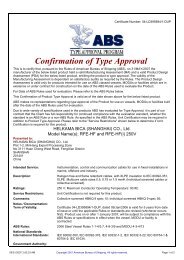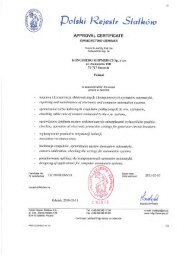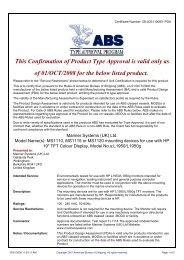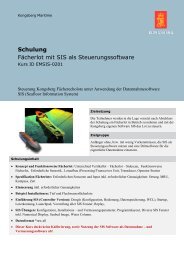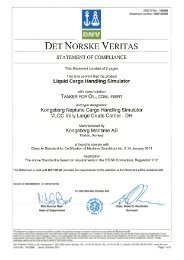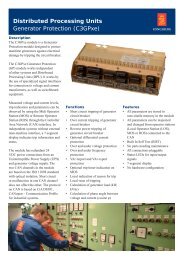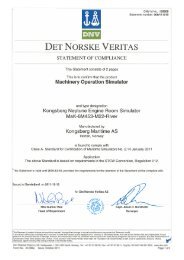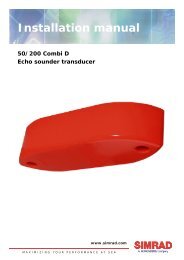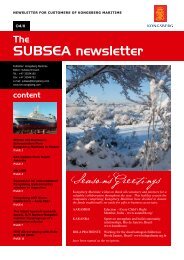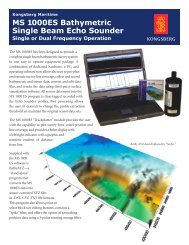Cargo and ballast simulators - Kongsberg Maritime
Cargo and ballast simulators - Kongsberg Maritime
Cargo and ballast simulators - Kongsberg Maritime
Create successful ePaper yourself
Turn your PDF publications into a flip-book with our unique Google optimized e-Paper software.
“STAR Center is pleased to report that <strong>Kongsberg</strong>’s<br />
NEPTUNE cargo h<strong>and</strong>ling simulator has met our<br />
high expectations. The years of development work<br />
shows in the accuracy <strong>and</strong> realism of the simulation<br />
models. The graphic user interface on the instructor<br />
<strong>and</strong> student stations is very intuitive <strong>and</strong> easy to use.<br />
The instructor system provides signifi cant fl exibility<br />
in building <strong>and</strong> running challenging simulation<br />
exercises. Unique scenarios can be developed using<br />
pre-programmed embedded faults <strong>and</strong> student<br />
performance can easily be monitored <strong>and</strong> assessed.<br />
The ability to replay the exercises is also a very<br />
valuable tool <strong>and</strong> the e-Coach capabilities are useful<br />
for developing tutorials for introduction to certain<br />
topics.”<br />
Brian Long, Director, STAR Center, USA<br />
Skills transfer<br />
The learning objective is to underst<strong>and</strong> <strong>and</strong> operate the entire cargo &<br />
<strong>ballast</strong> h<strong>and</strong>ling system in a safe, timely <strong>and</strong> cost-eff ective manner.<br />
Whether you choose a NEPTUNE full mission or desktop, your<br />
students or employees will learn a vast array of skills thanks to the<br />
pedagogical values <strong>and</strong> high fi delity realism the NEPTUNE simulator<br />
systems off er.<br />
Typical training applications include the following:<br />
• Routine <strong>and</strong> emergency procedures<br />
• Familiarisation with all parts of the cargo system<br />
• Planning of cargo loading <strong>and</strong> discharge<br />
• Use of loading computer<br />
• Line up for loading <strong>and</strong> <strong>ballast</strong>ing<br />
• Line up for discharge<br />
• Stripping of tanks by means of vacuum <strong>and</strong> ejector systems<br />
• Topping up <strong>and</strong> fi nalising loading<br />
• Aeration, inerting <strong>and</strong> nitrogen supply<br />
• Compressor systems, heaters <strong>and</strong> boosters on LPG/E tankers<br />
• LNG tankers with compressor systems <strong>and</strong> boil off<br />
• Mulitple loading/discharge operations with fl exible connections<br />
on chemical tankers<br />
• Discharge pump operation with dynamic pump <strong>and</strong> system<br />
performance curves<br />
• Flow control in relation to stability <strong>and</strong> mechanical forces<br />
• Communication to terminal, deck <strong>and</strong> cargo control room<br />
Contol room at the full mission cargo h<strong>and</strong>ling simulator<br />
at Dalian <strong>Maritime</strong> University, China<br />
Students running an exercise at the cargo h<strong>and</strong>ling simulator<br />
at Chalmers University of Technology, Sweden<br />
7




